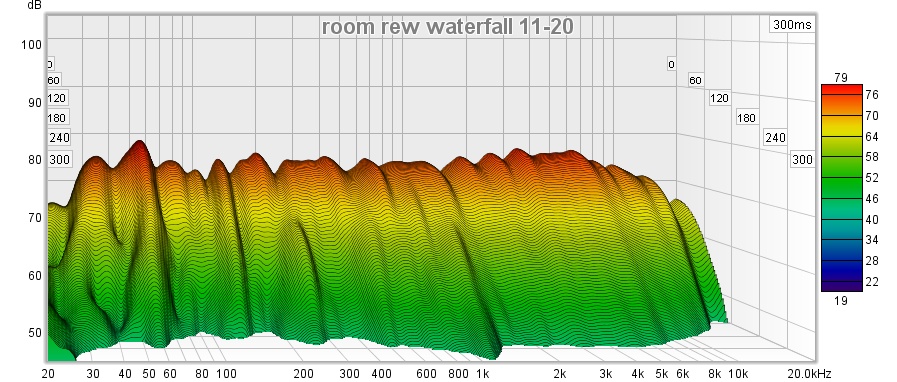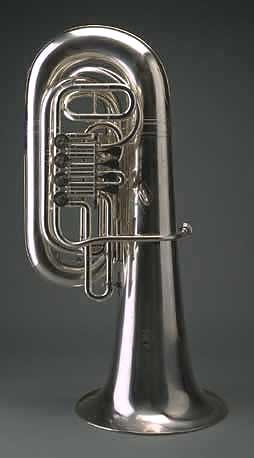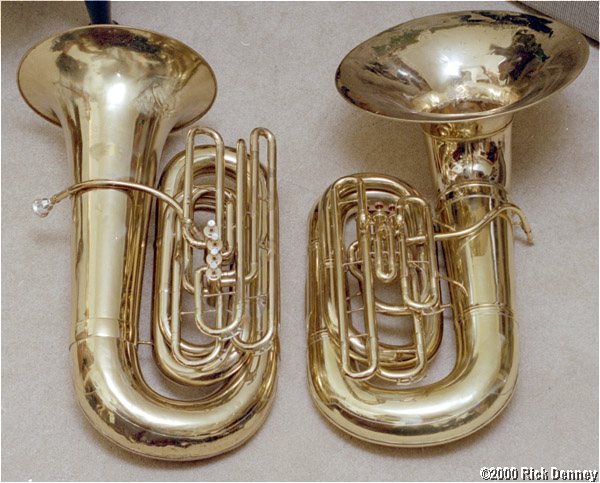Rick Denney wrote: ↑Mon Jan 18, 2021 11:19 pm
Okay, guys.
The quarter system was a way for any one company to distinguish instruments in their own product line. All Rudi Meinl rotary tubas are similarly configured, and their dimensionless ratios are sort-of similar. So, the 6/4 Rudi has a bigger bell, a bigger bore, a bigger throat, more volume, and a taller stack than a 5/4 Rudi. It isn’t just the 22” bell versus the 20” bell, but everything is bigger. Within the Rudi line, the quarter system applies to all dimensions, not just a few.
But RM’s idea of the standard full-size tuba is different than Miraphone’s, which is different than Alexander, which is different than Meinl-Weston.
I own a Hirsbrunner HBS-193 (pictured by Combatant B above), and also a Holton 345. The Holton is about five inches shorter, but it has a bigger throat and more volume. The sound is bottomless. The sound of the 193 is powerful. It’s like comparing a Bentley—a very large car with sporting intentions, to a Humvee, a tank with tires instead of tracks. Neither will get you quickly around a race track. But both support such different use cases that sharing a size designation beyond “big” is a fool’s errand. The Hirsbrunner is a Kaiser, which implies a range of characteristics common do all large and tall rotary tubas. The Rudi 5/4 is also a Kaiser, in my considered opinion. The Rudi 6/4 should be called a Döppelkaiser.
The Holton is a grand orchestral tuba, in the sense that the original 36J was called the Orchestra Grand Bass. It definitely has more volume, but the sound is different rather than greater.
The use of impedance is an interesting idea. Impedance is frequency-dependent resistance. Resonance implies low impedance, but there’s more to it than that. In the world of loudspeakers, the propagation and resonance of the speaker can be measured as a function of amplitude, decay, and direction. It avoids room effects by measuring single waveforms before reflections make it back to the test microphone. Equally interesting is measuring speakers in the room to see how the room affects resonance and frequency response. Propagation pattern is important—reflected paths arrive at the ear later than direct paths, and in a reverberant room, you’ll get a lot of phase cancellation and comb filtering in the upper harmonics relative to the lower ones. Reverberant rooms will favor clean articulations, fast attacks, higher harmonics, and direction propagation, while deader rooms will favor wide dispersion, lower harmonics, and smoother attacks.
Here’s a spectral decay plot showing where a loudspeaker resonates (bad) or nulls (also bad) across the frequency spectrum. These speakers are decent cheapies.
It’s not specifically useful for measuring tubas, which are intended to be resonant. But it’s more interesting than the simple Fourier transform frequency display like the one I used to measure tuba sound back in the deeps of time.
Here is a way to picture frequency response in a room. This room is fairly dead, but the waviness is caused by reflections out of phase with the main signal at some frequencies—the comb effect. The farther the test microphone is from the sound producer, the more it measures room effects. I’m going to play with this software to see if I can use it for measuring tuba sound. I think propagation has as much effect as harmonic content, but in a live hall, those two attributes are linked, sometimes to good effect and sometimes not. That more than anything drives preferences of those who make their decisions more thoughtfully that buying the currently hip thing.

By the way, here’s a Rudi 5/4 C tuba next to a Holton BB-345.
Differences are easy enough to see.
Rick “not at home, so having to file this away for a future project” Denney






